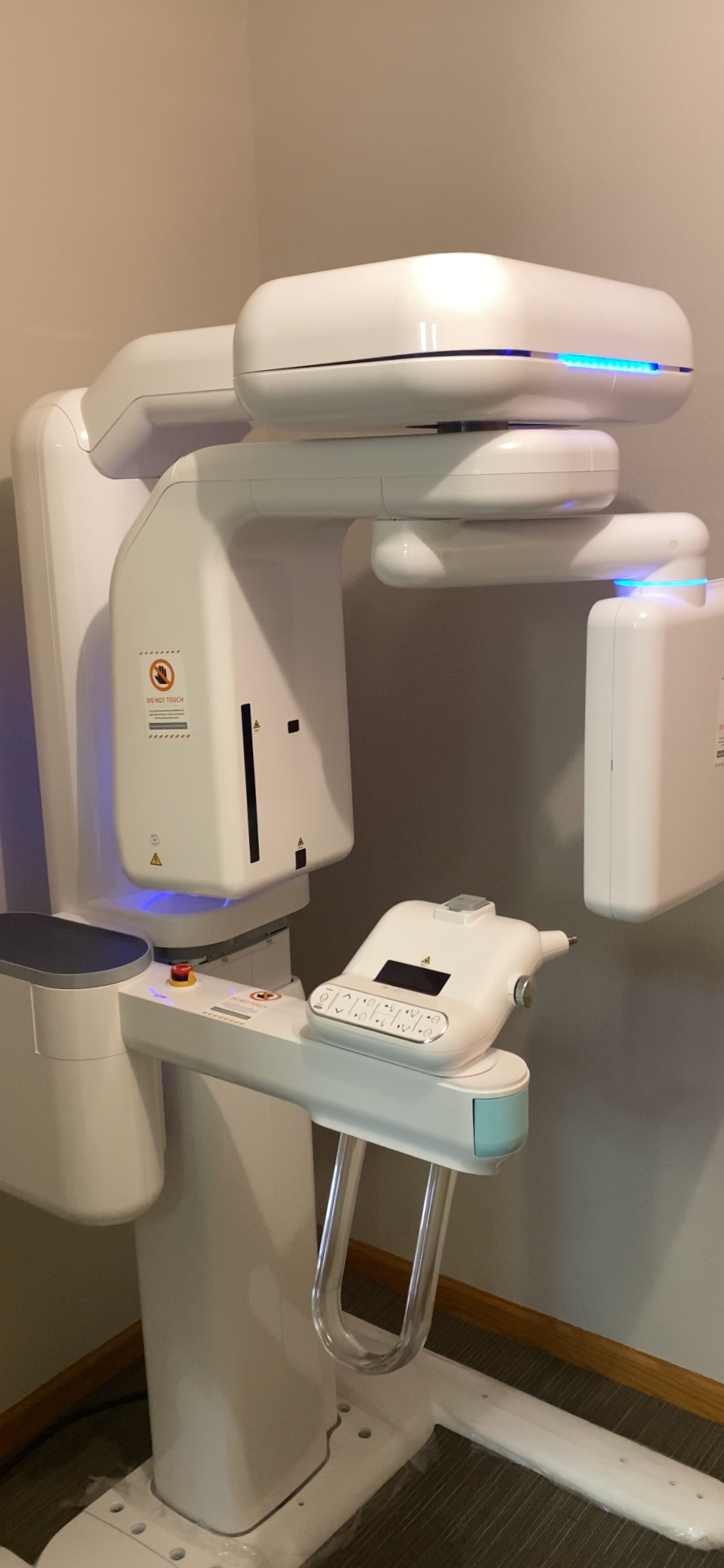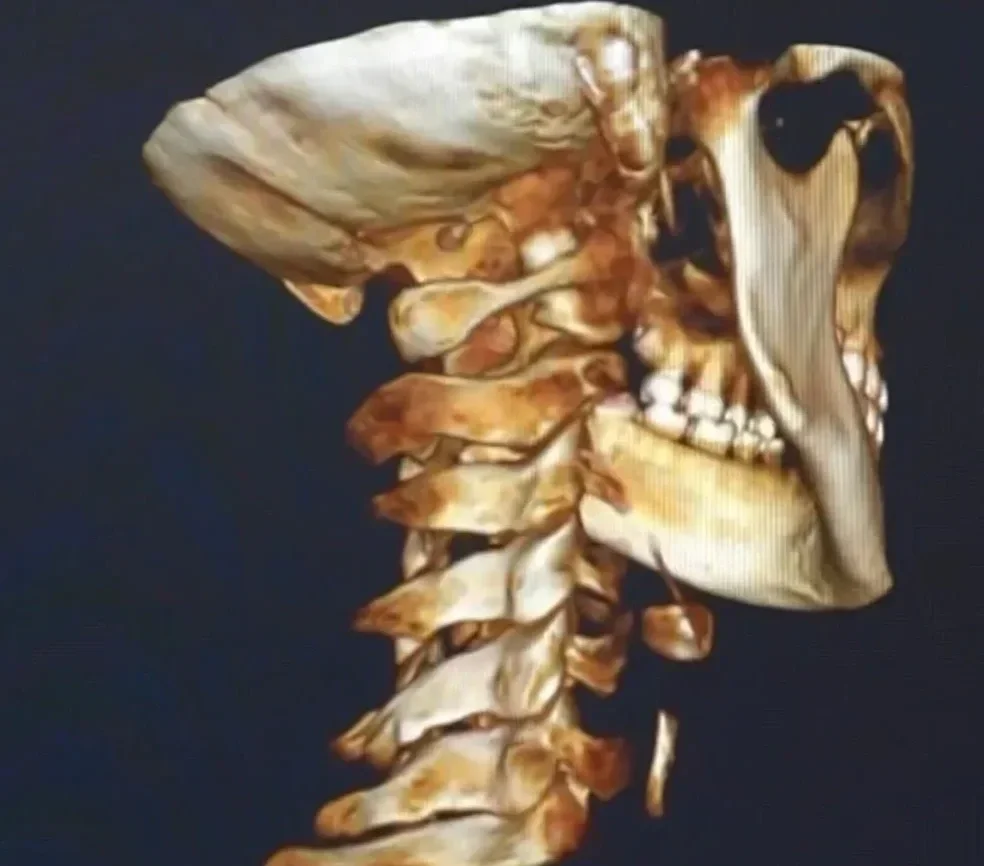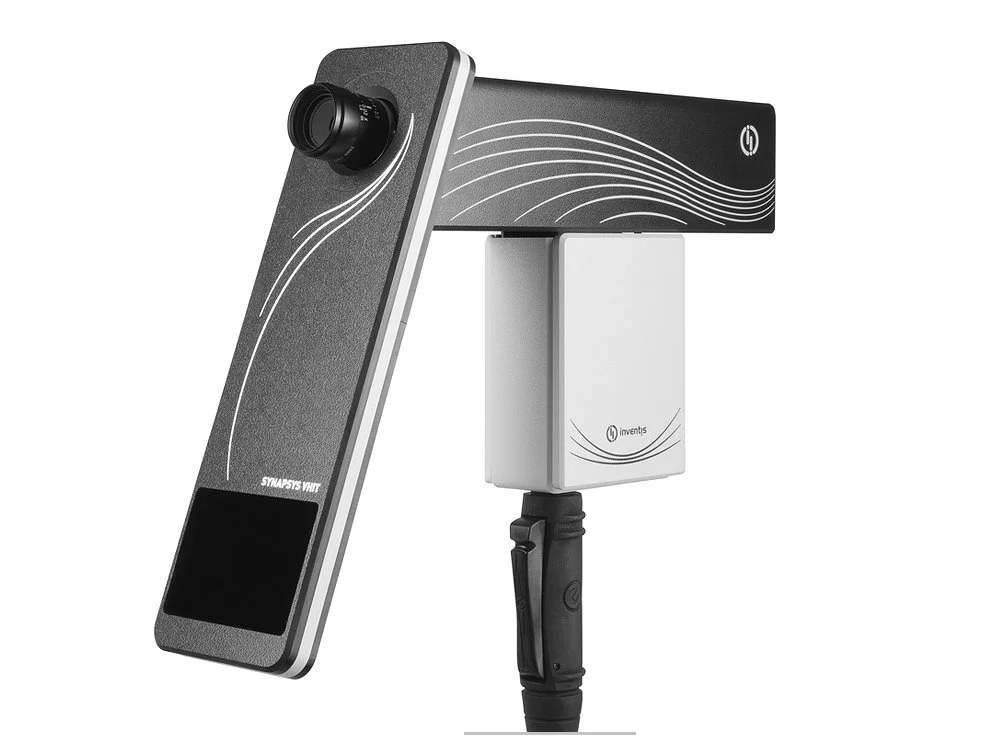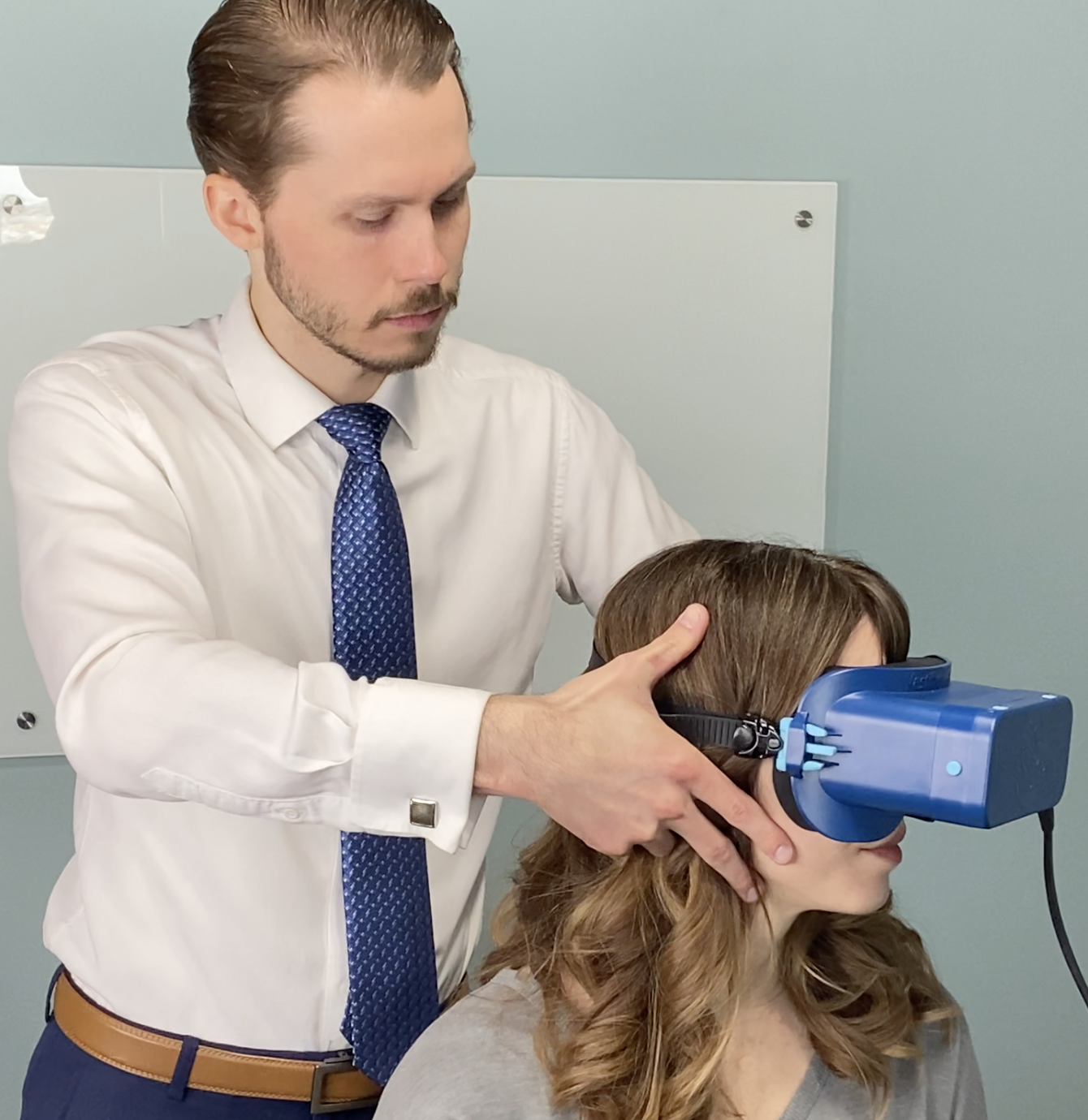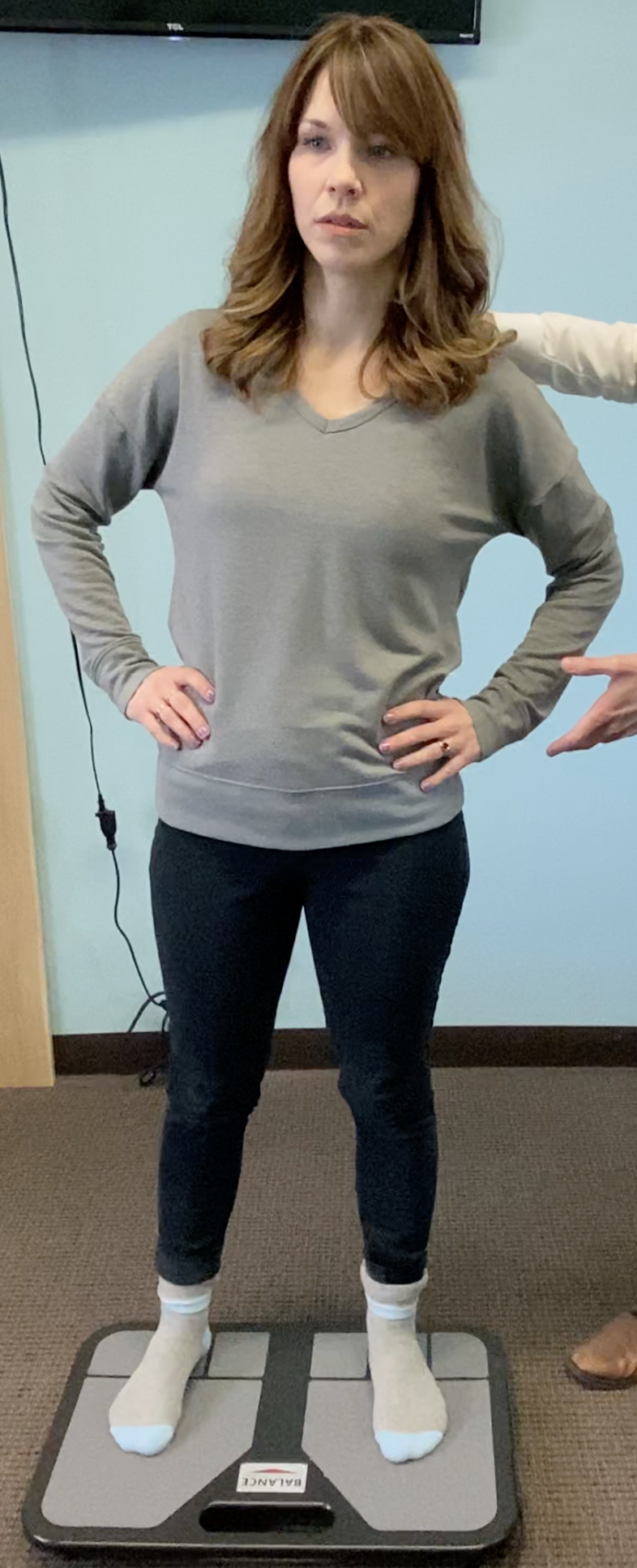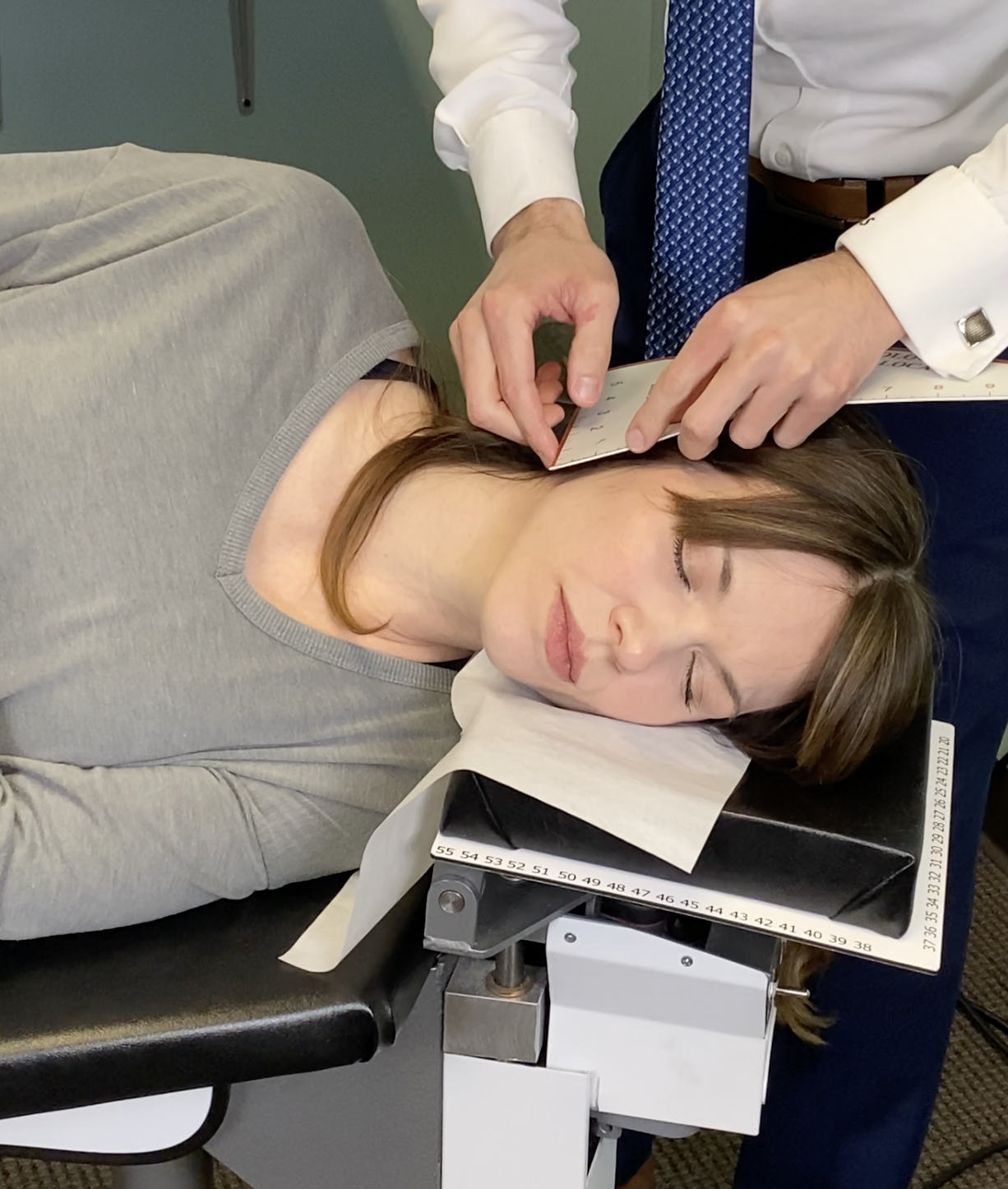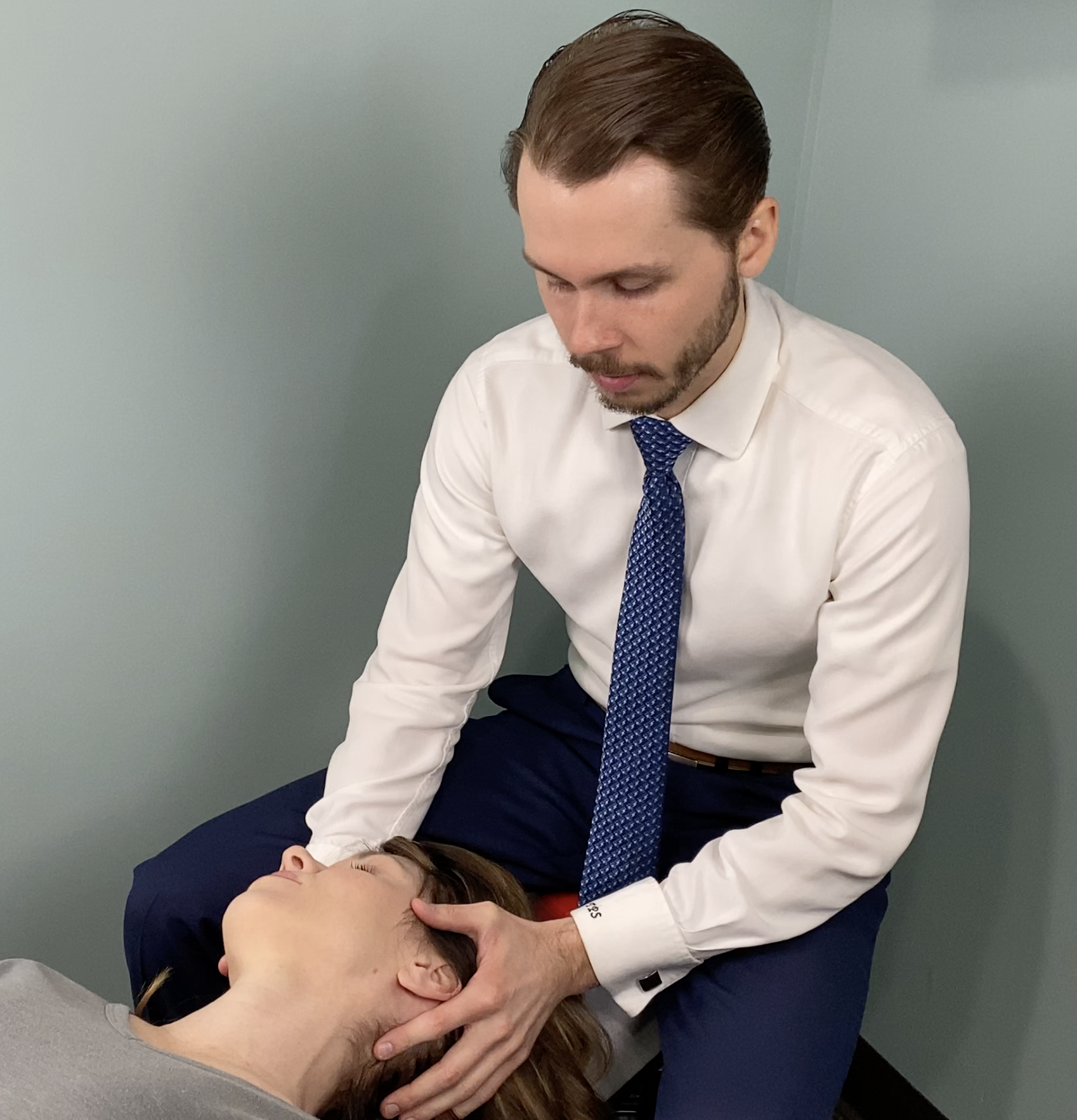OUR DIAGNOSTICS
At The Steward Clinic, we understand the importance of finding the underlying cause of your problem. Therefore, we invested in the best diagnostic equipment for accurate assessment.
Cone Beam CT (CBCT) 3D Spinal Imaging
One of the most crucial pieces of diagnostic equipment that we utilize is our Cone Beam CT 3D Spinal Imaging Unit. The CBCT is a revolutionary upgrade to diagnostic imaging. It enables us to replace traditional 2-dimensional X-rays with a 3-dimensional image of the entire cervical spine. Our CBCT allows Dr. Steward to detect spinal misalignments with great precision. We also have a radiologist trained in CBCT image interpretation review and report his findings back so our patients can be assured that nothing is missed.
Below you will find images of a 3-D CBCT image, the equipment, and a video of Dr. Steward showcasing the unit.
Video Head Impulse Testing
Many different issues can cause dizziness. One of the most common causes comes from the inner ear. The most accurate way to assess this is through the vestibular ocular reflex (VOR). The gold-standard way to assess the VOR is through video head impulse testing (vHIT). Our clinic has invested in the Inventis vHIT equipment. Below you will find a picture of the unit and a video from the manufacturer showing how it works.
Video Oculography
The inner ear has an intimate connection with the eyes through neurological reflexes. When there is an issue with the inner ear, we can typically diagnose it through the eyes. The eyes act as a window to the balance system. The most common cause of vertigo is Benign Paroxysmal Positional Vertigo (BPPV). The gold-standard in the accurate diagnosis of BPPV is through video oculography (VOG). VOG is a piece of equipment that uses infrared cameras inside a pair of goggles. The cameras record the eyes while they are in complete darkness. The doctor brings the patient through different head movements and assesses how the eyes react. Involuntary eye movements called nystagmus occur when there is BPPV or another type of unilateral imbalance within the vestibular system. The image below shows Dr. Steward testing a patient with the goggles, and the video shows what a positive finding of nystagmus looks like.
Posturography
Posturography is the study of the patient’s balance in different environments. The equipment consists of a highly sensitive pressure plate that the patient stands on while the software reads how much the patient sways from their center of pressure. Not only does this equipment tell us if there is an imbalance issue, but it also helps differentiate if the problem is coming from the spine, the inner ear, the eyes, or elsewhere. The image below shows Dr. Steward conducting a posturographic evaluation with a patient.
Low Tech
Though we use high-tech and advanced diagnostics at The Steward Clinic, we also understand the importance of low-tech and hands-on evaluation and diagnostics. Dr. Steward performs a physical exam on every patient, including a neurological and orthopedic evaluation. We also evaluate patients for certain somatosensory issues stemming from the neck. Just like an athlete can have issues with their hand-eye coordination, people can have issues with their head-neck-eye coordination. We test this through a simple laser and a grid on the wall. The video below demonstrates.
OUR CARE
At The Steward Clinic, we strive for effective care methods that enable our patients to restore function and reduce whatever is inhibiting them from living life to the fullest.
Upper Cervical Chiropractic Care
The care method that makes us unique amongst all vestibular/dizziness clinics is Upper Cervical Chiropractic Care. Upper Cervical is a specialty within the Chiropractic profession that focuses on realignment of the craniocervical junction (CCJ) (where the skull meets the neck). Proper alignment of the CCJ is crucial for normal function. Many critical blood vessels, nerves, muscles, and joints live in this region, as well as pathways for the lymphatics and cerebrospinal fluid. A misalignment of the joints in the CCJ can compromise the sensitive anatomy, leading to symptoms such as dizziness, pain, headaches, and stiffness, among others. The realignment is gentle, calculated, and based on measurements taken from the CBCT scan. Dr. Steward uses the Orthospinology method with an instrument to deliver a force of less than 3lbs to the neck.
Vestibular Rehab and Functional Neurology
To complement the Upper Cervical care at The Steward Clinic, we also use vestibular rehab exercises and functional neurology methods. The purpose of these methods is to strengthen injured or degenerated pathways, habituate sensitivities, and build plasticity that allows for new neurological pathways to form. The pictures below show Dr. Steward performing eye exercises with a patient and a repositioning maneuver.
If you think that our care could benefit your case, CLICK THE BUTTON to schedule a phone call with Dr. Steward for further discussion.


